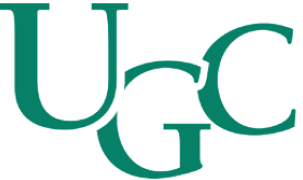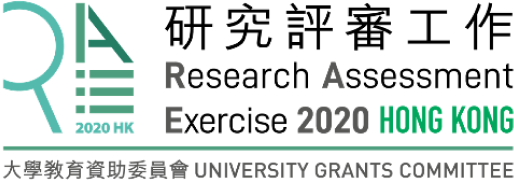Unit of Assessment:
Research categories:
?Clinical Medicine
Integrative & Complementary Medicine (2)
Pharmacology & Toxicology
Pharmacology & Pharmacy (4)
Impact locations:
?Asia
China (Mainland China) (2), Vietnam (1), Hong Kong, China (1), Macao, China (1)
North America
United States (4), San Diego (1), Canada (1)
Case Study
Development of molecular authentication and refinement of quality control of herbal material
1. Summary of the impact
This case describes the impact of Professor Pang Chui Shaw’s research in DNA genomic fingerprints revamping the conventional identification, authentication and quality control of herbal medicinal material. Beneficiaries include regulatory body in USA; government departments and pharmaceutical companies in Hong Kong, China and USA by providing expert opinions, authentication services and validation of protocols. The team has also raised the awareness of the importance of molecular authentication via media interviews, talks, lectures and exhibitions.
2. Underpinning research
The use of medicinal plants is popular worldwide. In China, 30%-50% of medicines consumed are herbal preparations. In Germany, 90% of the population use herbal remedies in their lifetime. In Hong Kong, more than 70% of respondents consumed over-the-counter Chinese herbal medicines in 2012. Correct herbal authentication is of paramount importance to the safety and best interest of consumers. Traditional means of herbal identification include morphological characterization, microscopic identification and chemical markers/fingerprints. With the advancement of DNA technology, molecular authentication has provided an independent and reliable approach.
Prof. Shaw (Professor, School of Life Science [1987-]) is a pioneer in applying DNA technology in herb authentication. In 1994, Shaw’s team first reported the application of Arbitrarily Primed Polymerase Chain Reaction (AP-PCR) to differentiate ginseng from American ginseng and later polymerase chain reaction-restriction fragment length polymorphism for Codonopsis species. From 2000 to 2019, Shaw’s team has published 50 peer-reviewed articles on using different DNA techniques for identification of various herbs and products. Two US and three Chinese patents were also obtained from 2003 to 2012. In 2002, Shaw published the field’s first English reference, Authentication of Chinese Medicinal Materials by DNA Technology (published by World Scientific Publishing Company, Singapore), followed by the Chinese reference in 2004 (3.1). These references described the molecular techniques for herbal medicine authentication and differentiation that were published by Shaw’s and others’ teams from mid-1990s to early 2000s, which include AP-PCR, random amplified polymorphic DNA (RAPD), Sequence Characterised Amplified Region (SCAR), Direct Amplification of Length Polymorphism (DALP), Restriction Fragment Length Polymorphism (RFLP), PCR-AFLP, Amplified Fragment Length Polymorphism (AFLP), Amplification Refractory Mutation System (ARMS) and DNA sequencing.
In 2010, Shaw’s team compiled the DNA sequences generated in his team and in public domain for the Medicinal Materials DNA Barcode Database, the first of its kind in the world (3.2). The database was updated in 2018. In 2011, Shaw published a review to summarize the advancement in using DNA sequence-based markers to authenticate herbal material on Journal of Systematics and Evolution (3.3). This paper has obtained an Outstanding Paper Award from the journal because of high citation.
From 2012, Shaw’s team has been expanding the scope of molecular techniques to authenticate herbal components in decoctions, medicinal granules and processed products (3.4, 3.5). This takes DNA identification technique to a new high, making molecular authentication adaptable to the whole pipeline of herbal products, from raw herbs to manufactured herbal products. The team has developed several molecular methods that allow rapid and onsite authentication of expensive and/or endangered herbs, such as Cordyceps and Placenta Hominis (3.6). This would suit the need for quality control of the industry as well as for efficient identification for regulatory purposes.
In 2015, Prof. Shaw was invited to set up Li Dak Sum Yip Yio Chin R&D Centre for Chinese Medicine from a donation of HK$100 million and was appointed as the director of the centre to enhance the development of Chinese Medicine.
3. References to the research
3.1 Shaw, P., Cao, H., Wang, J. and But, P. P.-H. (2004) Authentication of Chinese Medicinal Materials by DNA Technology. China: Fudan University Press.
3.2 Lou, S.K., Wong, K.L., Li, M., But, P.P.H. and Shaw, P.C. (2010) An integrated web medicinal materials DNA database: MMDBD (Medicinal materials DNA barcode database). BMC Genomics. 11: 402. [MMDBD: https://rdccm.cuhk.edu.hk/mherbsdb/]
3.3 Li, M., Cao, H., But, P.P.H. and Shaw, P.C. (2011) Identification of herbal medicinal materials using DNA barcodes. Journal of Systematics and Evolution. 49: 271-283.
3.4 Lo, Y.T., Li, M. and Shaw, P.C. (2015) Identification of constituent herbs in ginseng decoctions by DNA markers. Chinese Medicine. 10(1): 1.
3.5 Jiang, L.L., Lo, Y.T., Chen, W.T. and Shaw, P.C. (2016) DNA authentication of animal- derived concentrated Chinese medicine granules. Journal of Pharmaceutical and Biomedical Analysis. 129: 398-404.
3.6 Lo, Y.T., Yik M.H. and Shaw, P.C. (2018) Effective authentication of Placenta Hominis. Chinese Medicine. 13: 32.
4. Details of the impact
Herbal medicine has long been plagued by fraudulent replacement, substitution or mingling with inferior herbs, arousing public concern. More scientific and reliable molecular authentication methods have been developed under the endeavour of Shaw’s team. The impacts of Shaw’s research into molecular authentication of herbal material and associated intellectual property have exerted on commerce, public welfare and education, ranging from local to international.
Impact on commerce: generating high economic return and enhancing product reputation
Since 2008, DNA fingerprinting technology for identification of Codonopsis pilosula (Dangshen) and Astragalus root (Huangqi) (3.1) has been adopted by Livzon Pharmaceutical Group Inc. for authentication, generating an economic return of average 1 billion RMB/year from 2013-2017 (5.1). Since 2014, the DNA barcoding and sequencing technologies of Shaw’s team have been adopted by Kangmei Pharmaceutical Co., Ltd for the quality control of fish maw, “enhanced the product reputation and increased the sales by 45%” (5.2). The team also helped Zigen Medical Sciences Limited to authenticate Cordyceps samples for quality assurance in 2016, thus exploring new markets, “the value of our product is recognized, leading to numerous orders from ….Vietnam, Canada and Macau…” (5.3). In 2018, the team also helped CocaCola Ltd. to understand the nature of the raw herb material and to make important business decision of the products (5.4).
Impacts on practitioners and services: Influencing professional standards & guidelines
To enhance international use of DNA technologies, Shaw organized International Conference on DNA technology for authentication, quality control and conservation of herbal material in 2016 and 2018. Over 150 scientists and personnel from herbal industry and regulatory agencies from 10 countries or areas attended the conferences. A survey in the second conference indicated that over 97% of participants agreed the conference was fruitful and useful to their work (5.5). His work on the DNA authentication of decoctions (3.4) has been featured in Botanical Adulterant Monitors, Vol. 5, 2015, a journal widely read by the herbal industry in USA. Shaw’s team is in collaboration with the USA Pharmacopoeial Convention (USP) to validate the molecular identification protocols on selected herbs, before they are released to the public. This organization is for setting and managing the reference standards for herbal drug testing in USA. USP has acknowledged that Shaw’s work has greatly facilitated their monographs development (5.6).
Impact on public health and welfare:
(i) Quality assurance on herbal products to ease public concern
Shaw has provided expert advice regarding the quality of herbal products to the Hong Kong Customs and Excise Department since 2015, using the DNA sequences stored in the MMDBD (3.2). The team has also authenticated Dendrobium products for Taishan Charitable Association Ltd, using the DNA barcoding technique described in 3.1 in 2016, “The result of the authentication increased the confidence of the users on the product.” (5.7).
(ii) Raising public awareness of herbal product scientific authentication
Shaw has actively engaged in communications to the public and industry. In 2016-2017, the team organized workshops for quick molecular authentication of genetically modified (GM) papaya for 92 participants from secondary schools and non-government organizations. The techniques used are described in the various chapters in 3.1. His findings of faked Placenta Hominis on the market using the technology developed (3.6) was considered having high impact to the public and was therefore reported in the front page of Tao Kung Pao, a major newspaper in Hong Kong that is also accessible to readers in China in 2017 (5.8). In 2017, the team was invited by the Hong Kong Council for Testing and Certification to the BIO International Convention in San Diego in the United States, which was visited by more than 10,000 people. This has increased the public awareness on the use of DNA technology to authenticate herbal material and products.
Impact on education
Shaw’s book translated to Chinese (3.1) has been collected by more than 200 university libraries in China since first published in 2004 (5.9). A recent survey showed that over 7800 students in at least 10 universities have used the book for training from 2014-2018 (5.10).
5. Sources to corroborate the impact
5.1 Acknowledgement letter from Livzon Pharmaceutical Group Inc. (2017)
5.2 Acknowledgement letter from Kangmei Pharmaceutical Co., Ltd (2018)
5.3 Acknowledgement letter from Zigen Medical Sciences Limited (2018)
5.4 Acknowledgement letter from CocaCola China Limited (2019)
5.5 Survey of 2018 “2nd International Conference on DNA technology for authentication, quality control and conservation of herbal material” (2018)
5.6 Letter of appreciation from USA Pharmacopeia Convention (2014)
5.7 Acknowledgement letter from Taishan Charitable Association Ltd. (2017)
5.8 Front page of Tao Kung Pao on 11 December 2017 (2017)
5.9 Collection of Shaw’s Chinese reference book in mainland China libraries (2018)
5.10 Certificates of application of Shaw’s Chinese book (2018)

